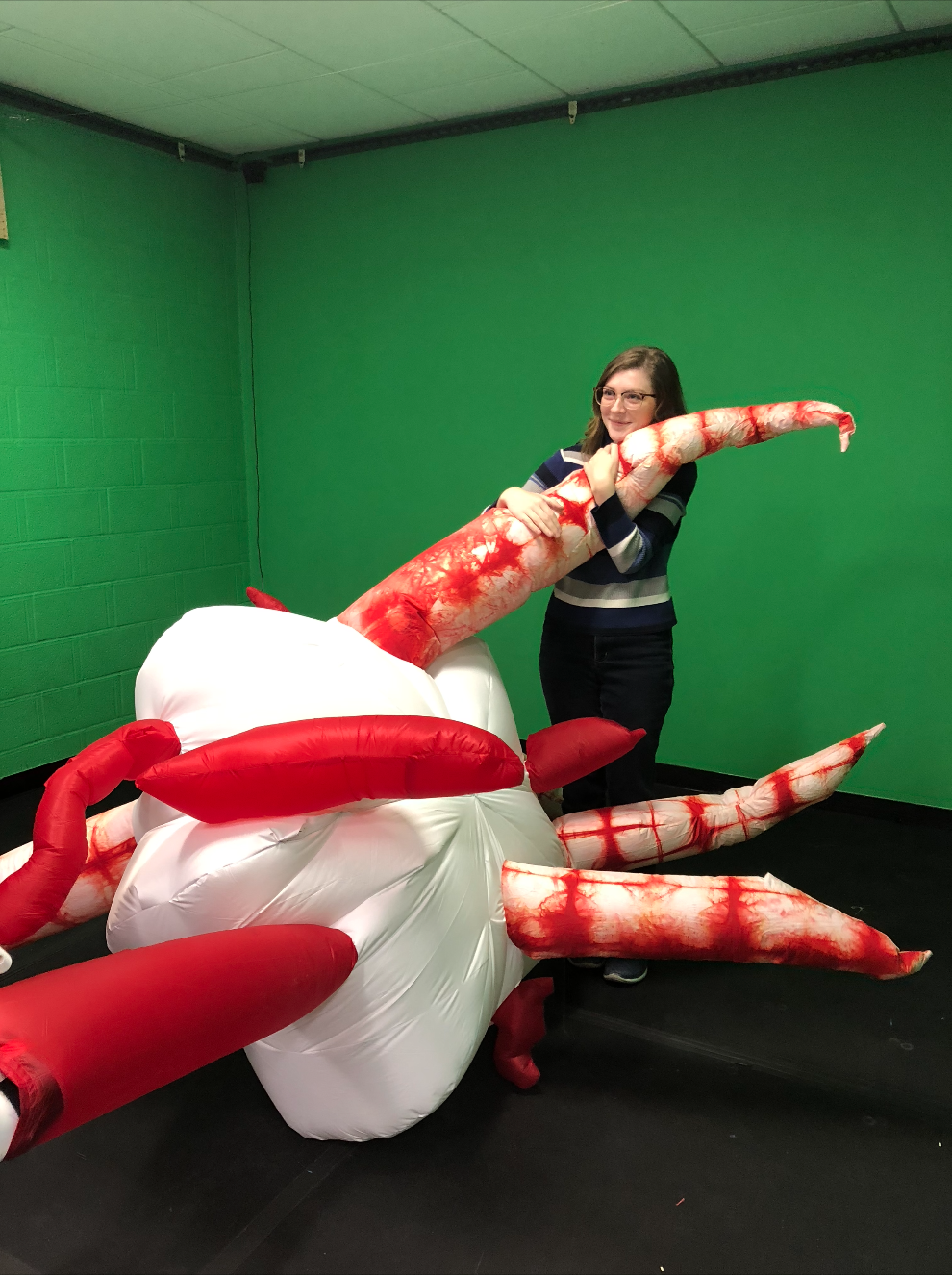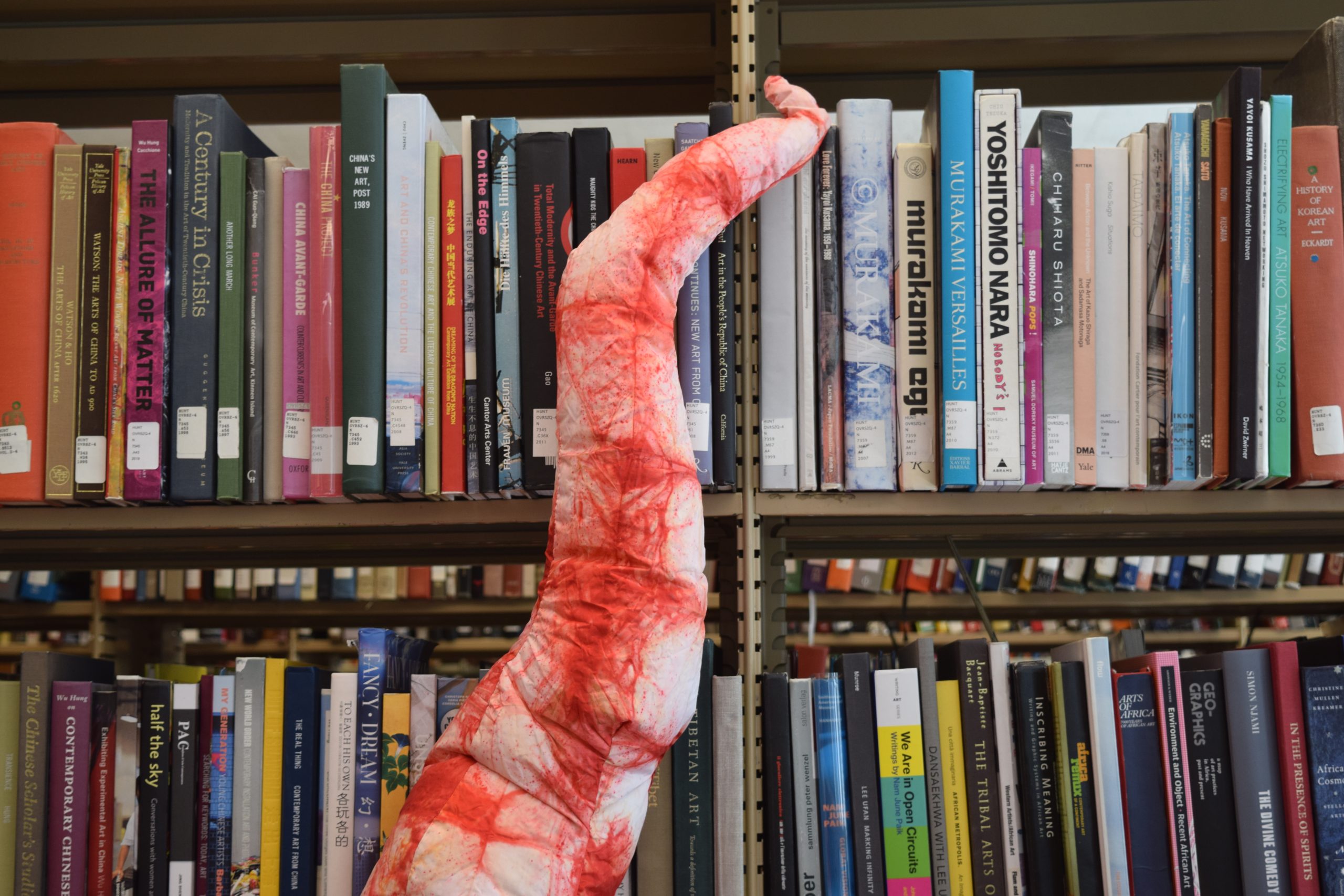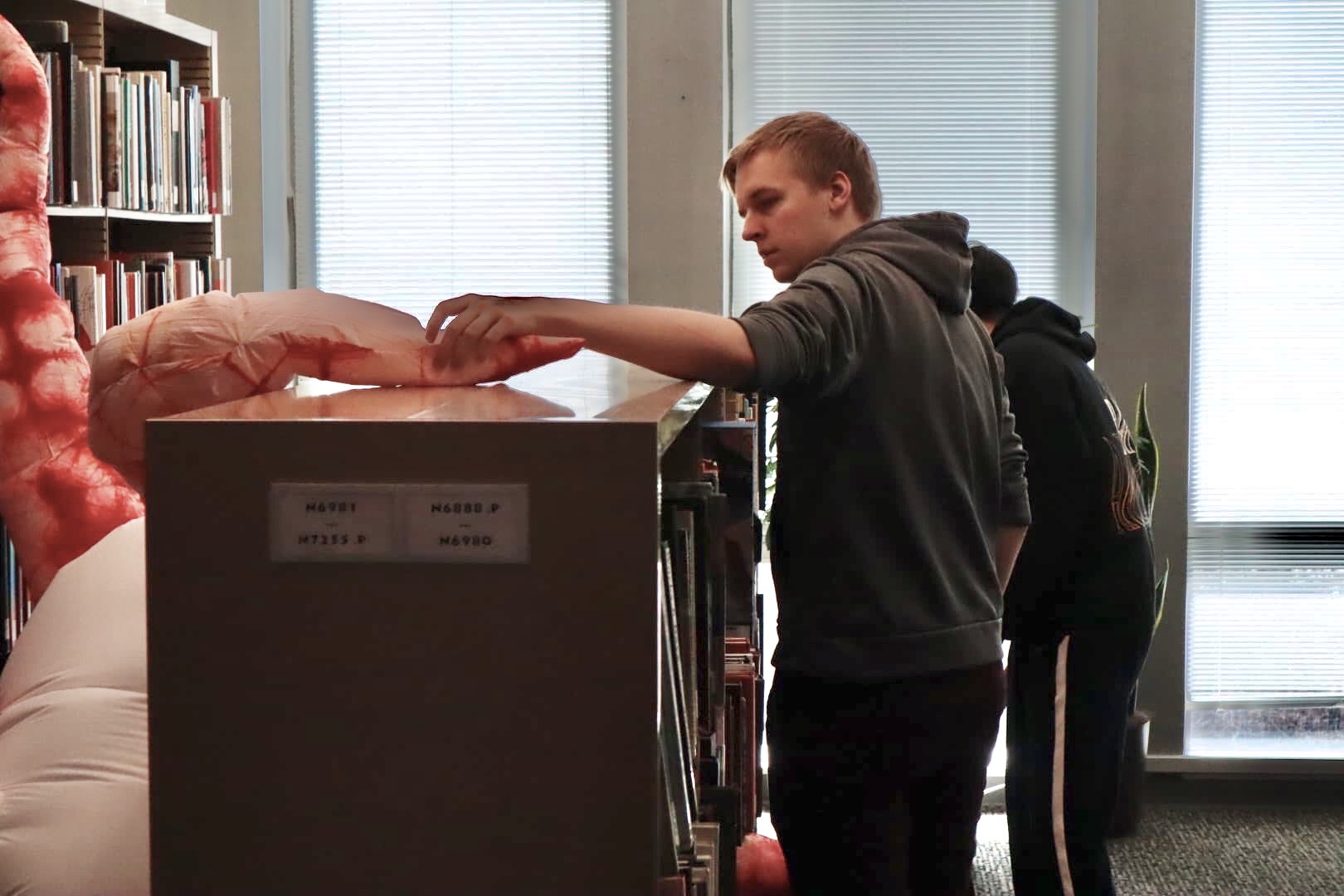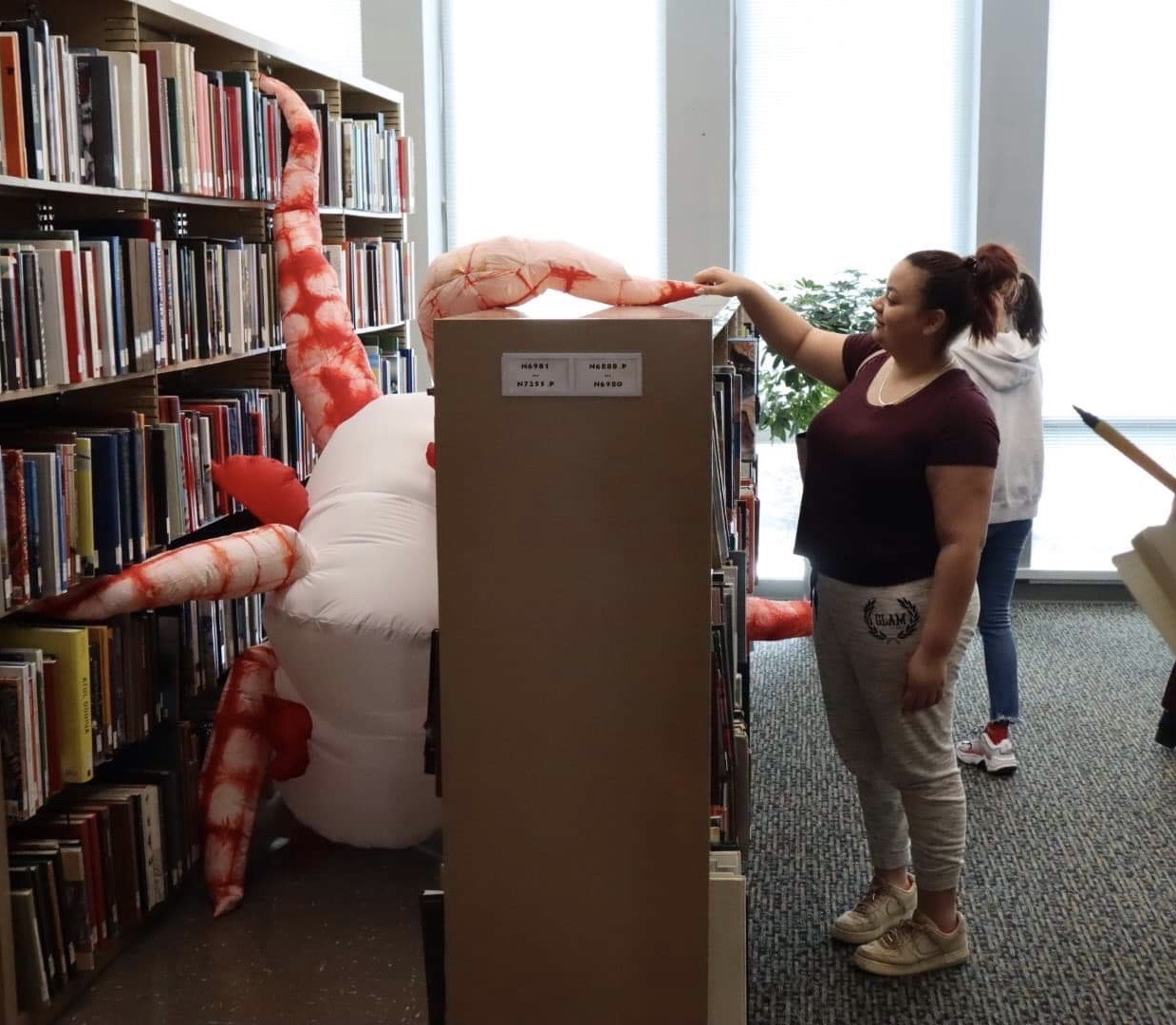Push/Pull Part 2 – Cora Hickoff and Kevin Thies
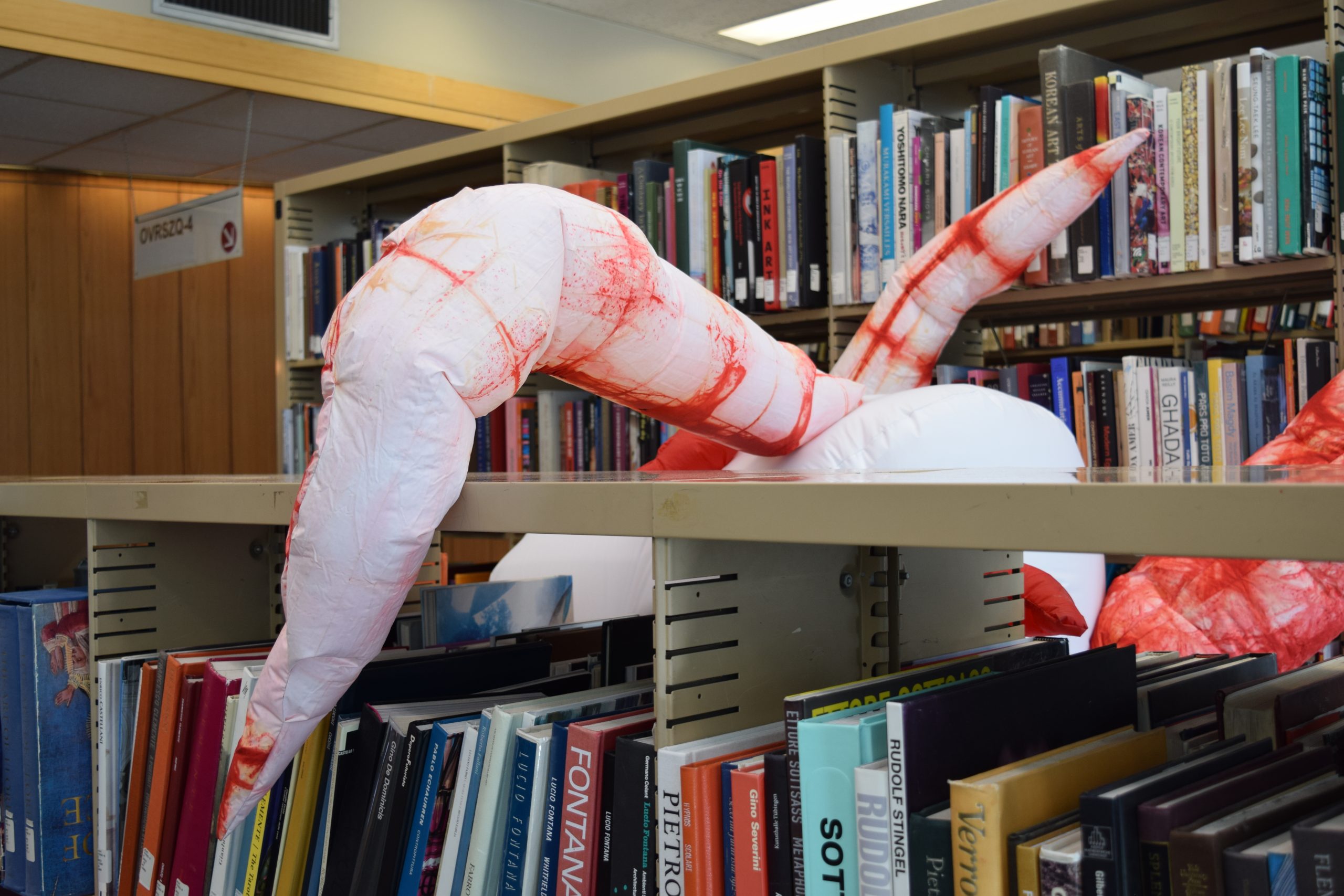
A tentacled beast raises a crustaceous limb, grasping at an oversized copy of Yayoi Kusama’s work. Clutching the book, it pulls its inflated, meatballish body further down the library stacks, where it continues to strain itself, curling tentacles wrapping around anything in its wake.
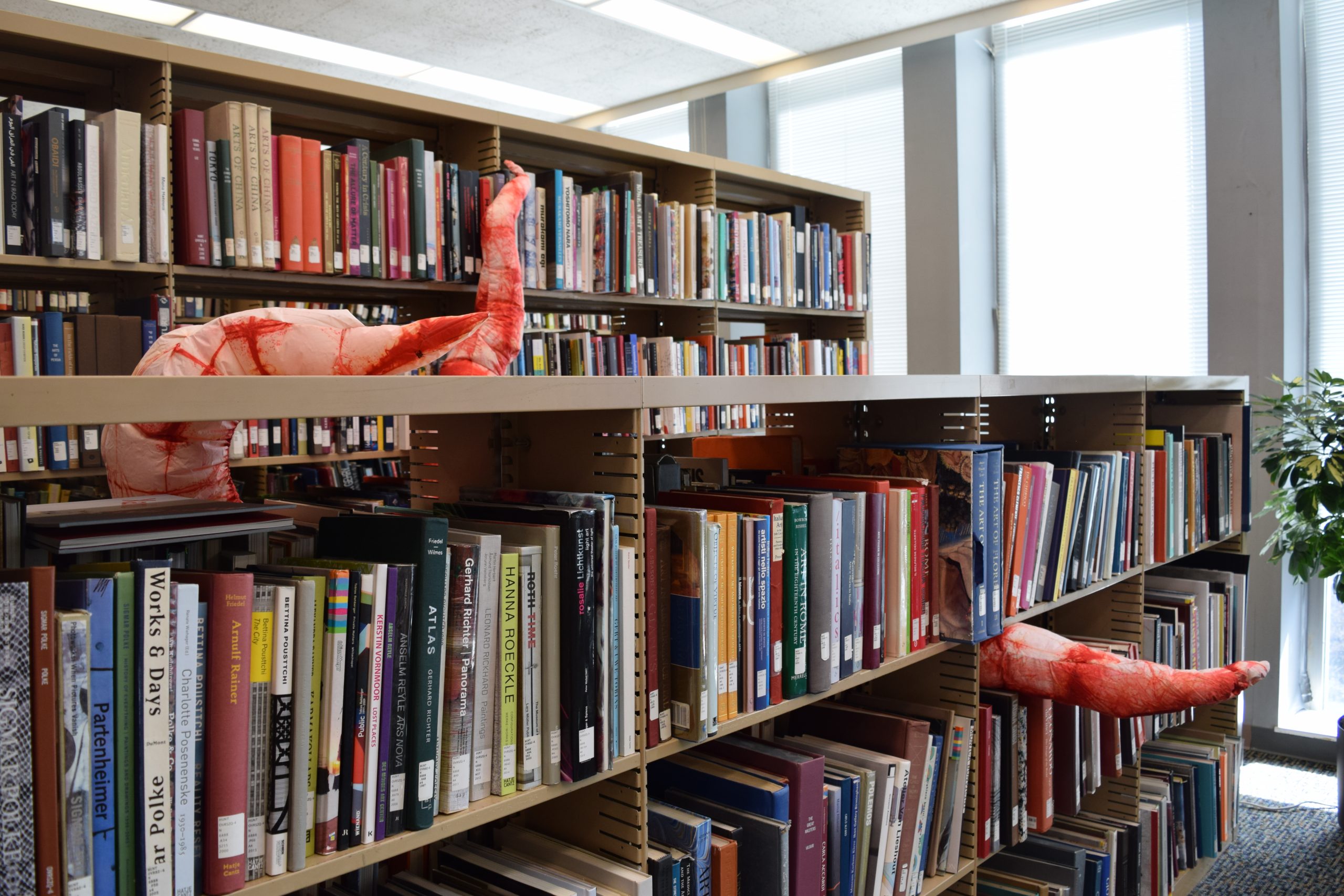
For this project, we were tasked with taking our Push/Pull Part 1 projects and combining them, placing a scaled-up version within a location at Hunt Library. We each had objects that we enjoyed and took elements from both projects and combined them.
Kevin’s Unfurling Pod
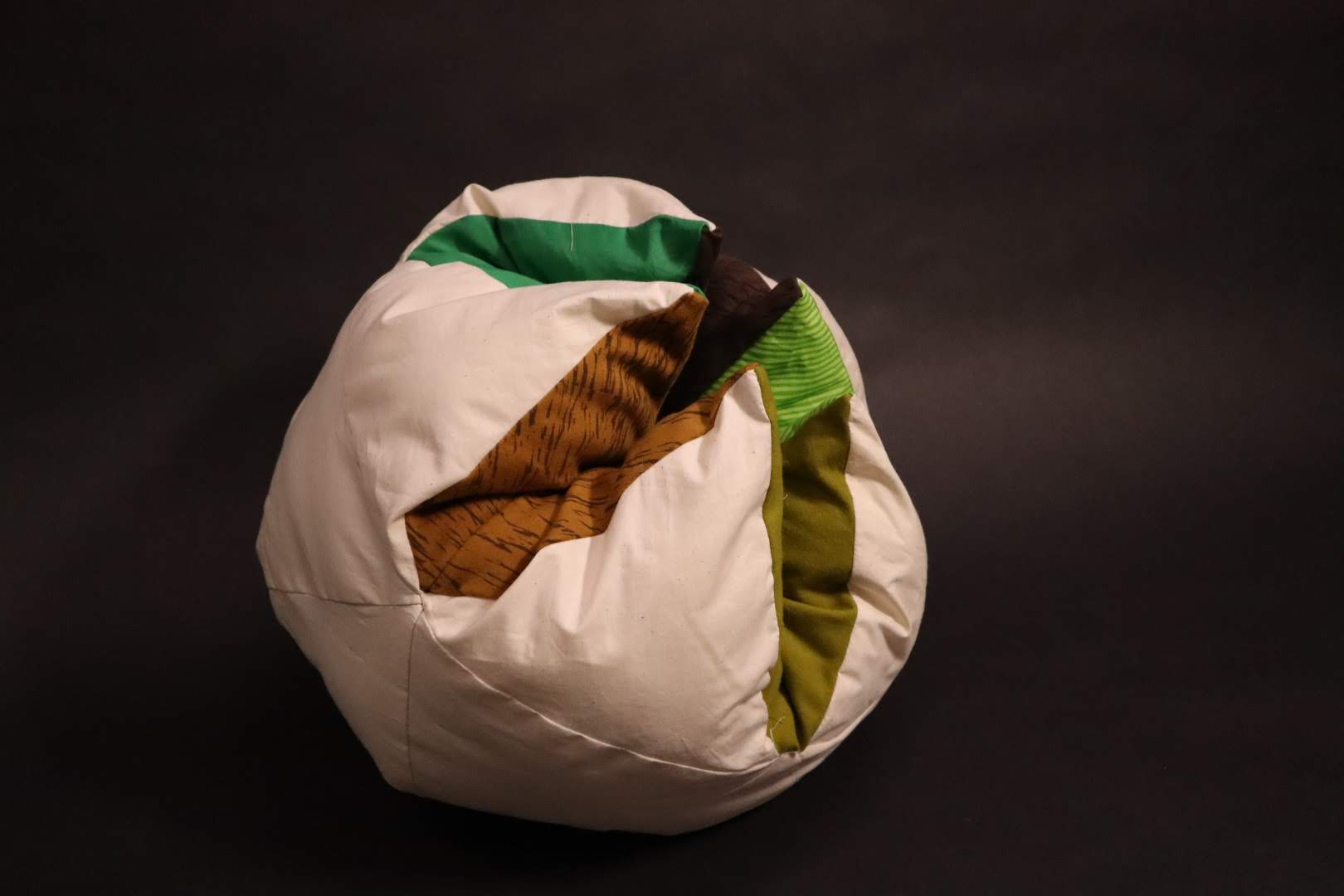
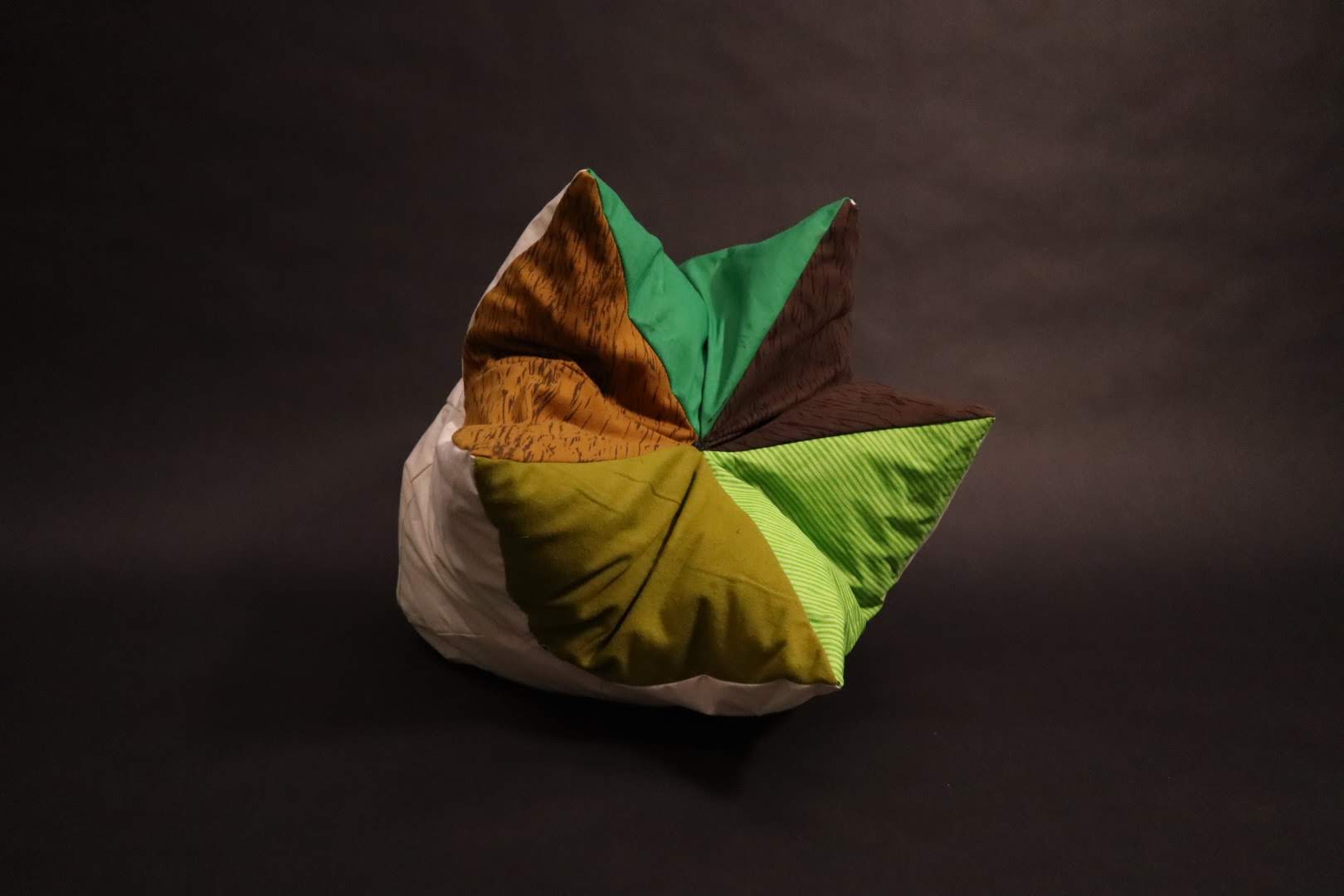
For this piece, we enjoyed the unveiling of the simple muslin exterior, revealing the pop of color and pattern within. There’s a joyful mystery to it, and it draws the eye to the more exciting bits. There was also a dynamic aspect to the project, where a button on the back could be pulled to open and close the maw. This action became part of one of our tentacles that could curl with the pull of a string.
Cora’s Mushroom Blob
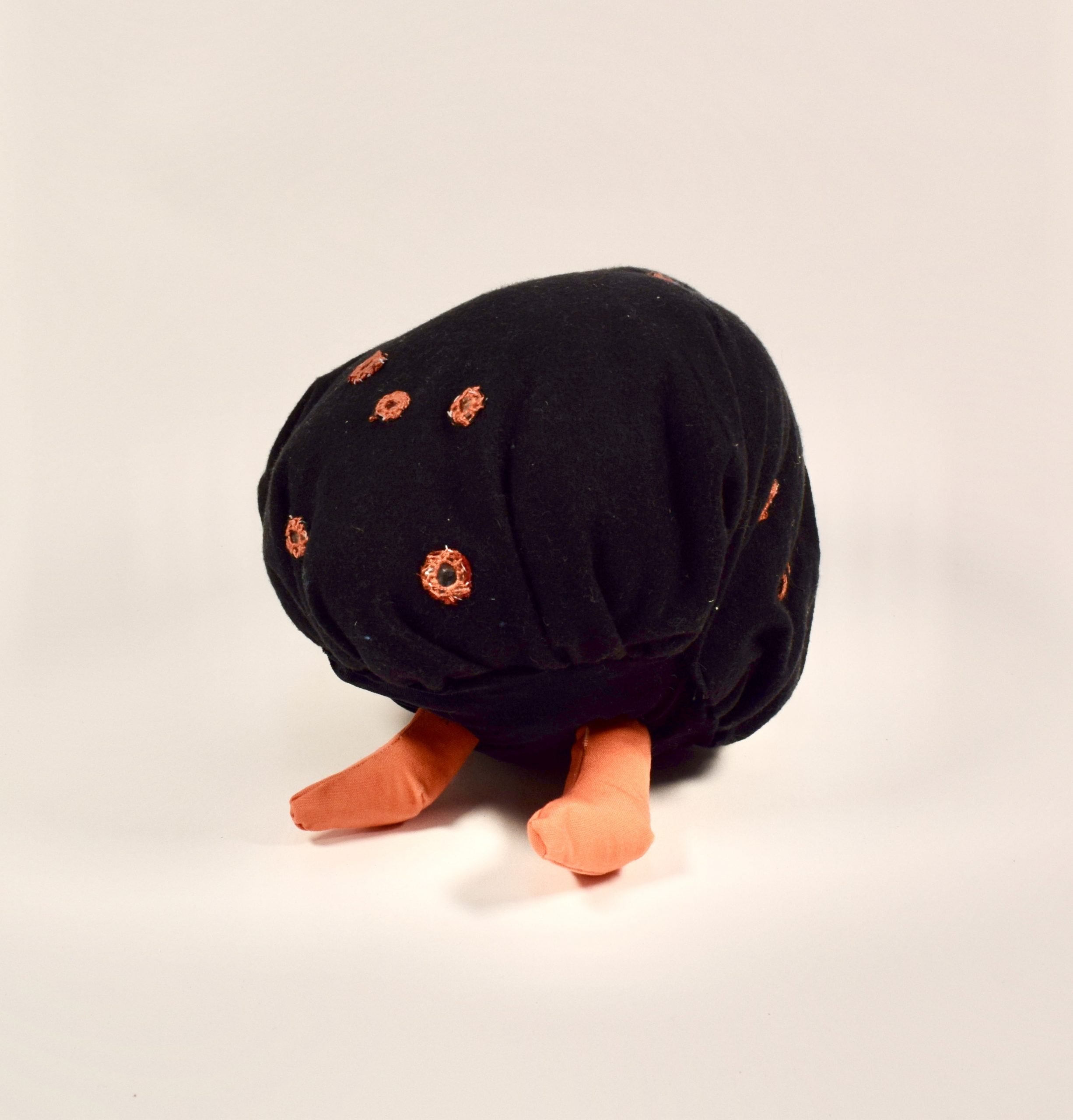
One of the intriguing aspects of this character was the small feet. They gave the form life, and were a big inspiration in our final design. One of the first ideas we came up with was a mass of feet, and developed from there.
Even though the form was amorphous, it still felt alive and seemed to belong to another world. We wanted our large inflatable to give off the same feeling. Funny enough, the sewn tentacles would at times grab nearby objects or chairs as we carried them.
Process
While digging through the nylon scrap, we found a delightfully vivid and life-like tie dye fabric, almost like the skin of a crab or lobster, and knew we wanted to use it somehow. The white ripstop nylon that made up the creature’s body was in part a material consideration of the project, as it’s what we had the most of, and would contrast with the tie dye fabric. Because the tie dye was red and white, we chose to have additional, red blobs coming out of the form to indicate that they haven’t yet formed into full tentacles.
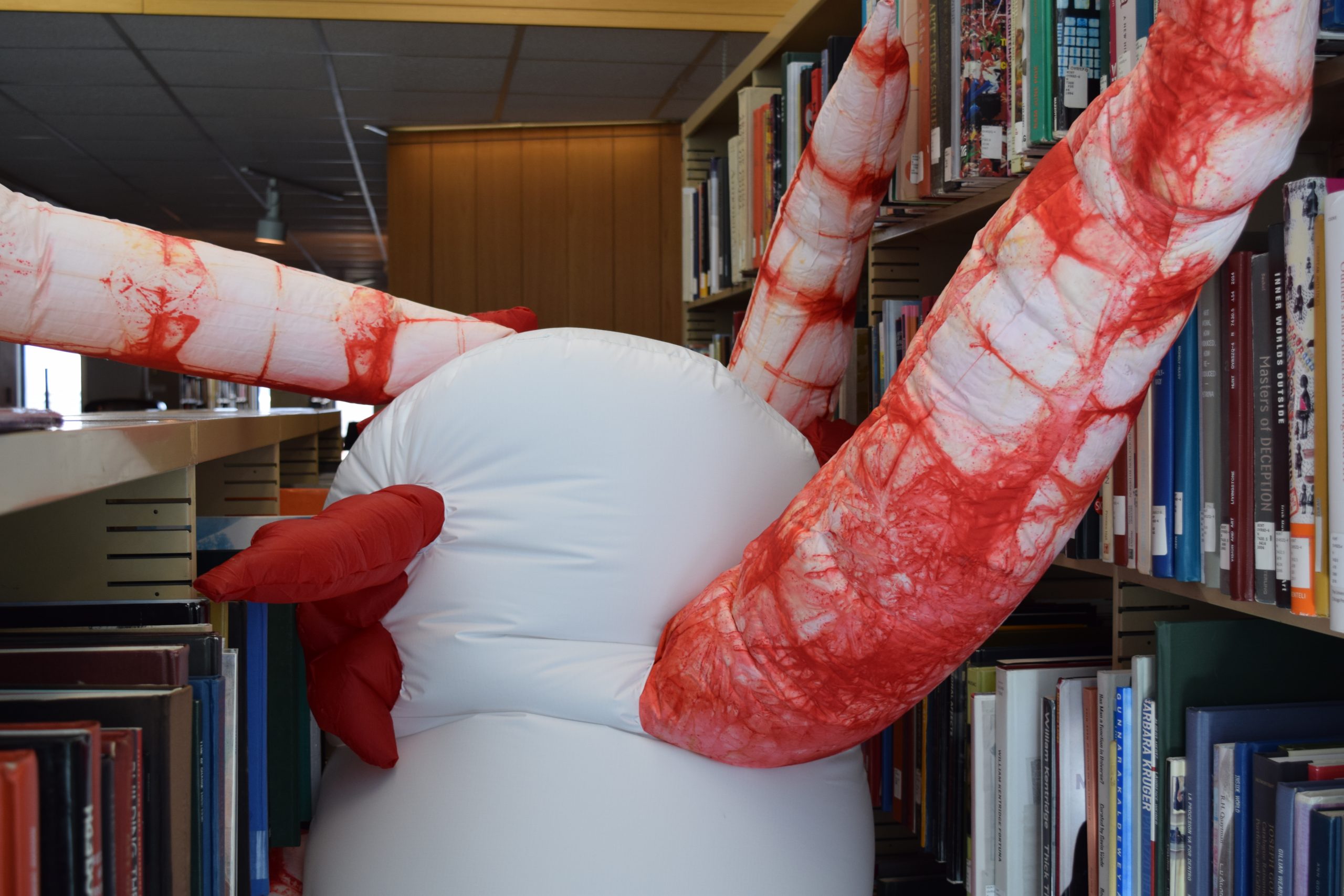
We had an idea for situating our creature between the rows of books, that its bulbous form could be squished in the claustrophobic stacks. We decided that the main body would be a sphere, but squished on the sides. We found a preexisting sphere pattern online, which called for six identical slices. We then altered the shape in Photoshop to expand the seams and made only five slices to create the main form. The resulting shape wasn’t quite sphere, but more flower-esque and organic.
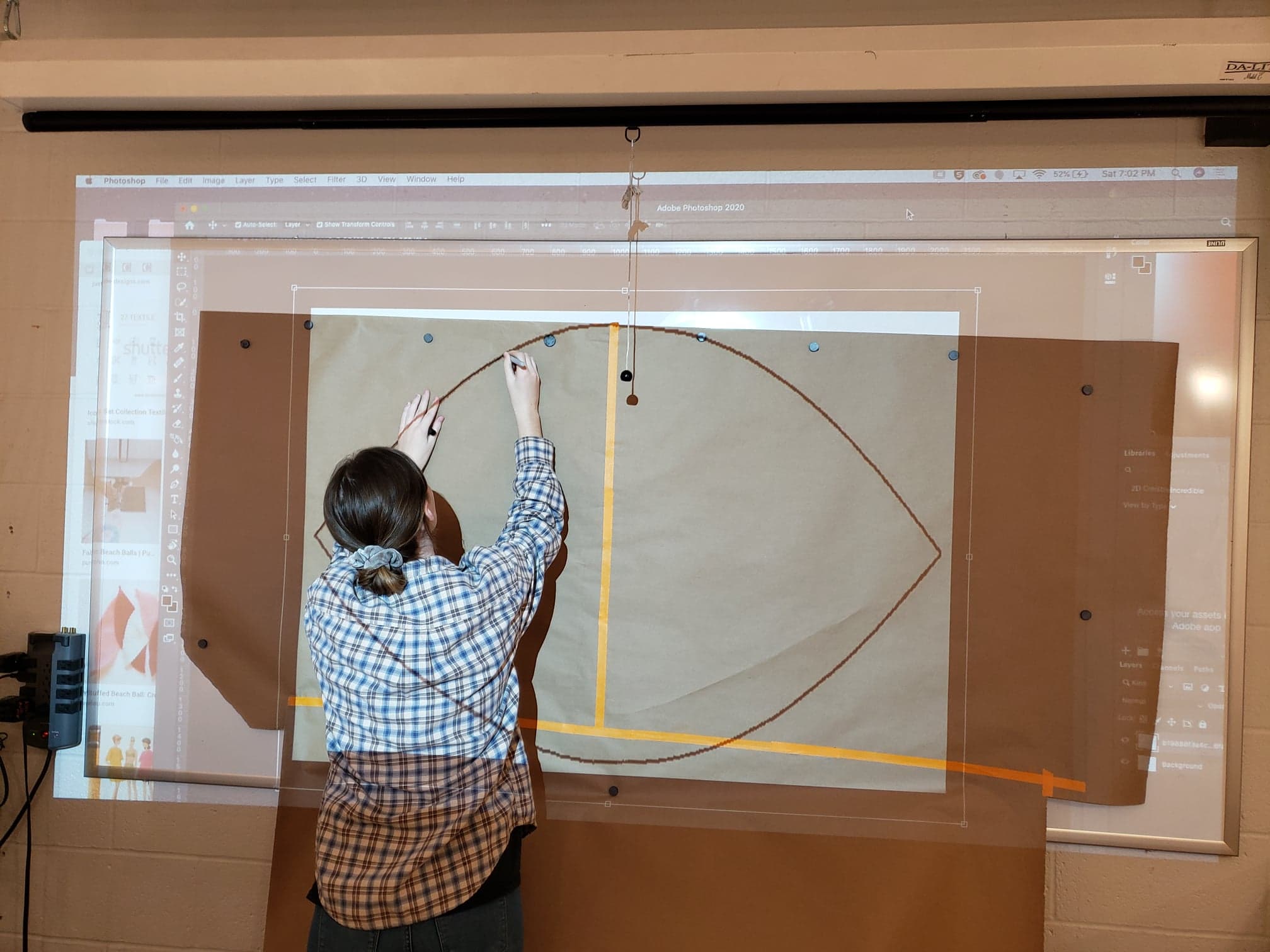
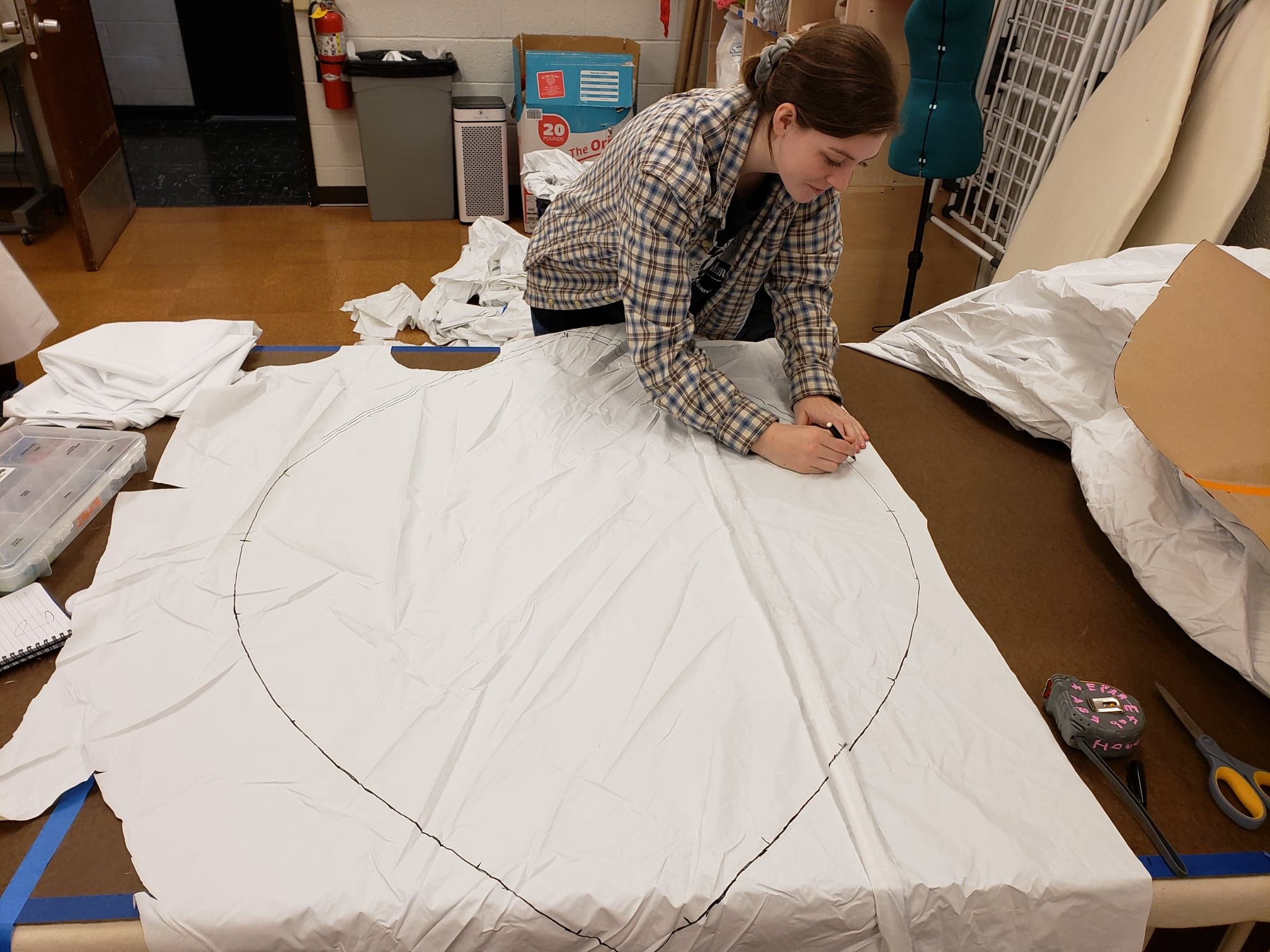
Only so much of the design could be done on paper, and so we moved into the physical realm of cutting, altering, and sewing. When creating the red blobs, we wanted them to feel organic. Instead of planning out how each would look, we let the forms take shape naturally as we fed the fabric through the sewing machine. It was a great exercise for moving forward when we dealt with the tentacles and larger blobs.
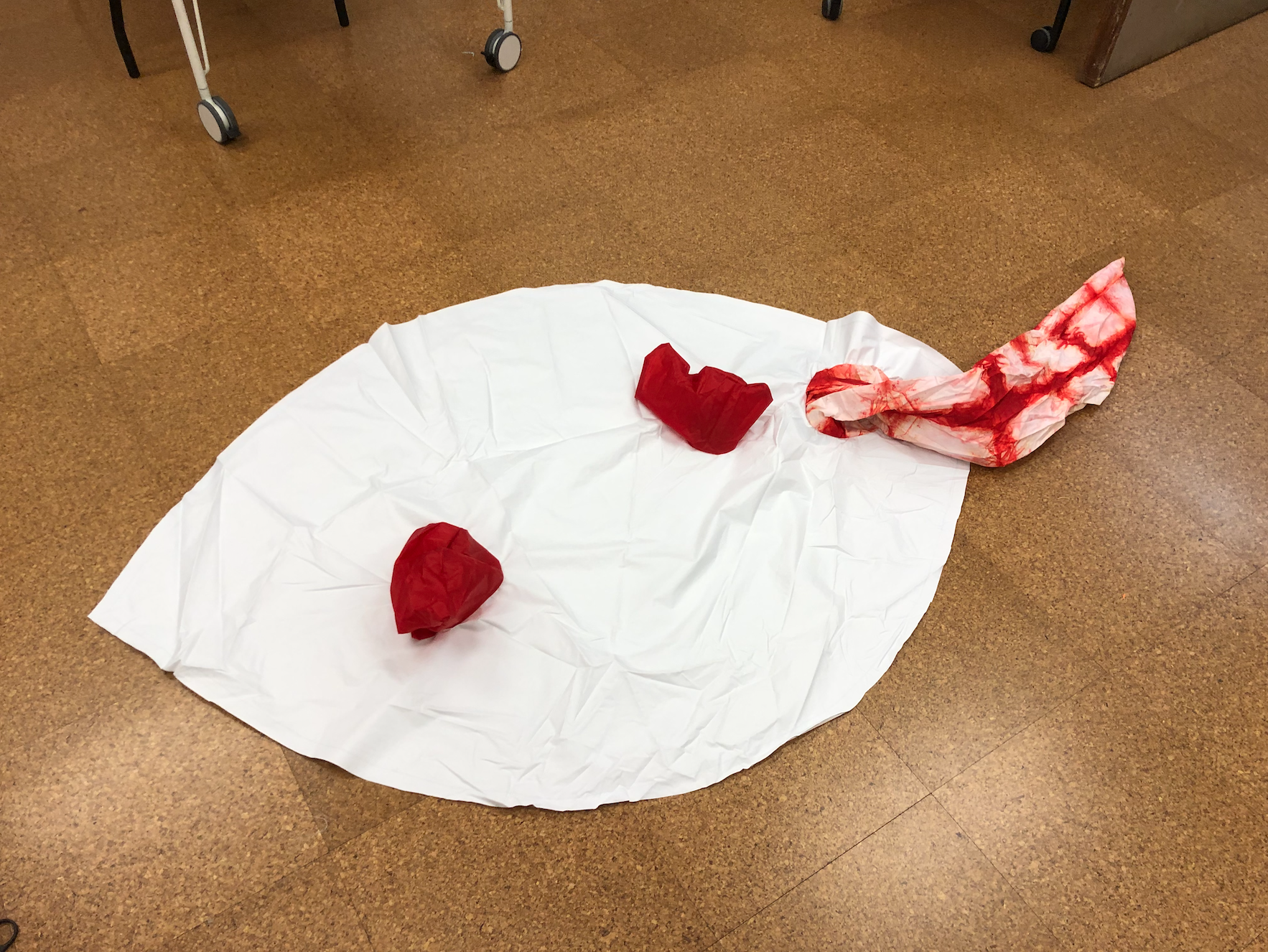
Our tentacle fabric was already pre-dyed and sewn up, so we had to make decisions on how to alter them, both to fit our aesthetic desires for a clean form with hidden seams, as well as to end with our desired tentacle tips. Making the tentacles dynamic was a process of trial and error, and we ended up doing a mix of organic discovery on the sewing machine and sewn ‘tendons’ that were pulled in to curl the tentacles, with a method similar to that of sewing a ruffle.
Once we had our blobs and tentacles, we attached them to our slices. At this point, we had to figure out how much white space we wanted, and where we wanted our tentacles and blobs to be, and how they would be arranged. We ended up doing what felt balanced, and figured out what the fabric wanted to do, and where it wanted to be.
Reflection
We liked the idea of the creature being neither peaceful nor malevolent. By existing in both worlds, there’s a sense of ambiguity and uncanniness. It has the potential to harm and be disruptive (for instance by pushing books out of the stacks), but is also just confused and struggling to move through our world.
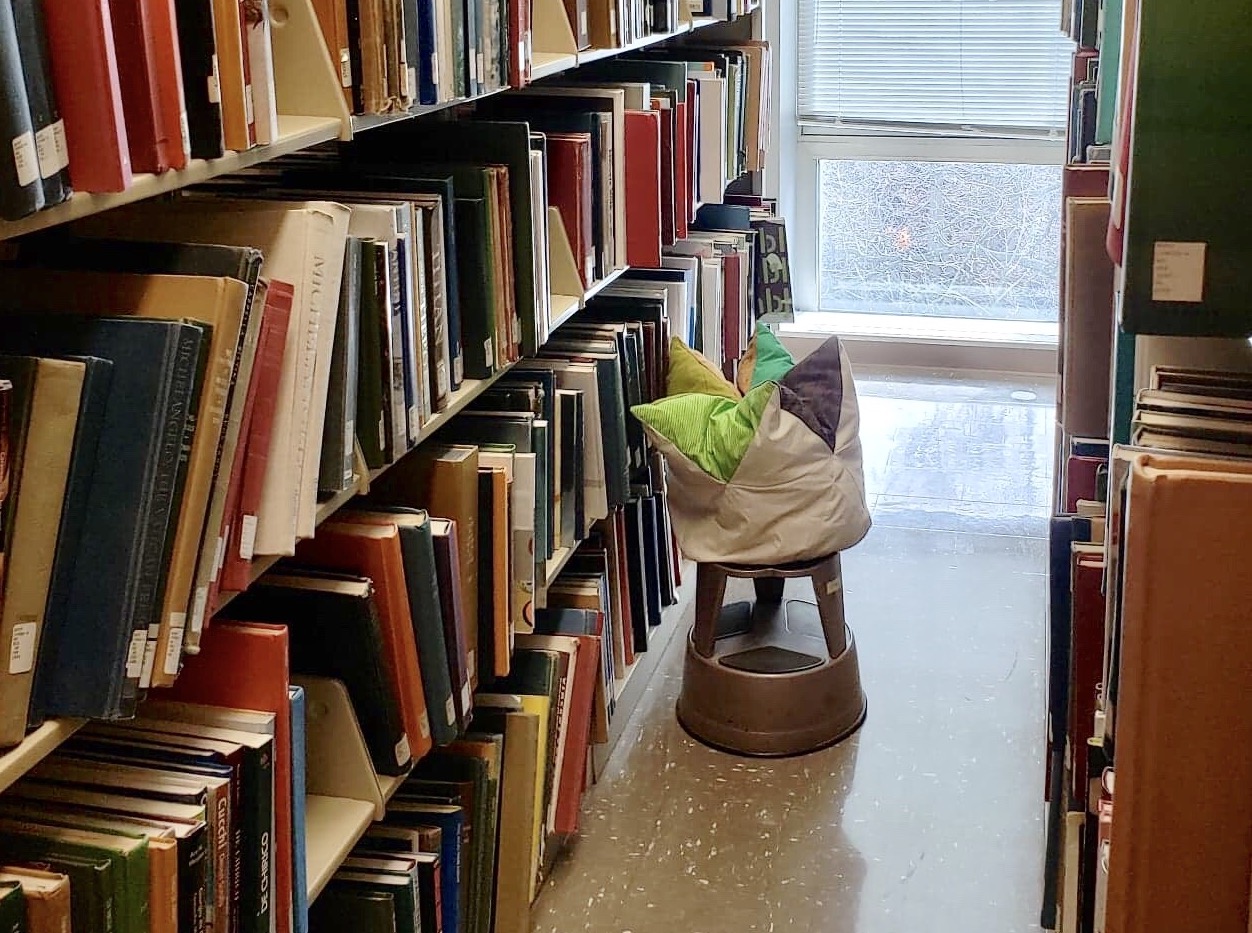
Choosing the stacks ended up being a great move, as the tentacles could latch onto and push through the bookshelves. The organic nature of these interactions cemented the creature in our world as a creature instead of a sculpture. Consequently, the inflatable looks best when photographed in and around bookshelves, which made it difficult to fully photograph, and didn’t feel quite right having it in the open against a backdrop.
It was really interesting when the project was revealed to our classmates. People would touch the tentacles sitting atop or coming through the shelves, and many compared it to a monster or a parasite that could hurt someone. However, when asked by our teacher, nobody actually said that it scared them. The form might have uncomfortable aspects, but the inflatable nature and cartoonish aspect of it looking stuck make it more silly. Plus, it loudly announces its presence with the fan that keeps it inflated, and it’s in a brightly lit environment, so it won’t be sneaking up on anyone.
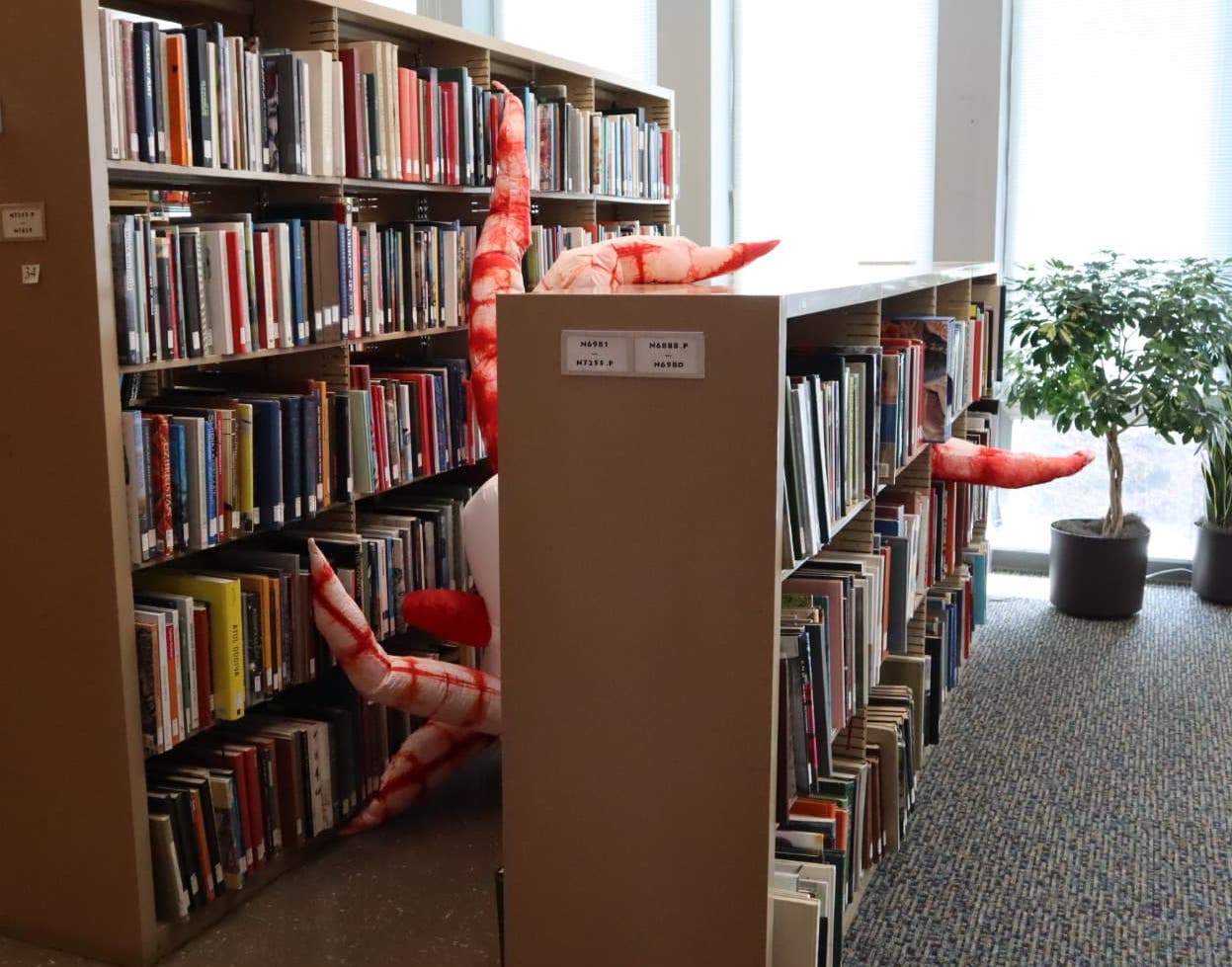
Our final piece succeeded in fitting into the world of the mushroom blob, and the two pieces provide more of a view into the world they come from. It would be exciting to see more of the creatures and artifacts of that world, and how they interact in their natural environment.
Overall, our project was successful. As its creators, we wanted the form to be fun and live in between the contexts of the library and that other world. If we were to continue working on this, we’d look into moving it into other spaces where it could be more in the way, adapting its form to further bother people and clumsily disrupt them.
